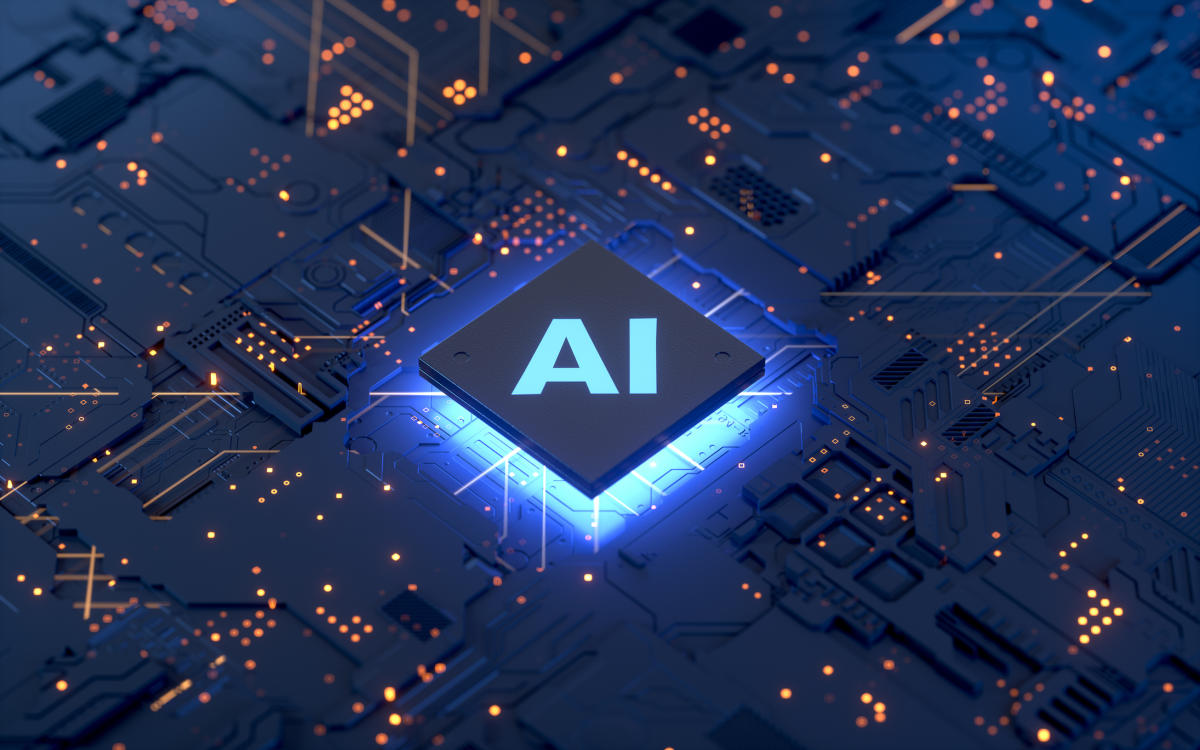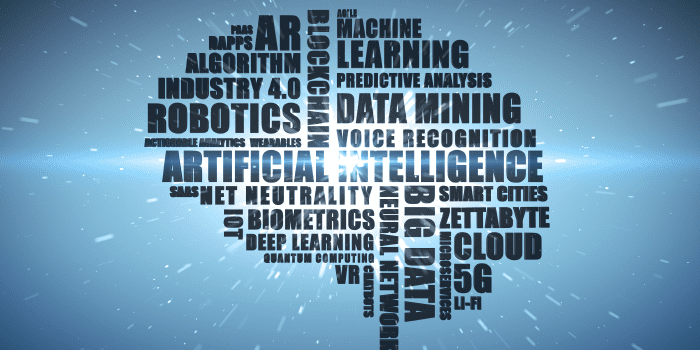Unleashing Innovation With Generative AI: a Deep Dive Into Artificial Knowledge
Artificial knowledge (AI) has revolutionized countless industries, and among its most intriguing elements is generative AI. This cutting-edge innovation holds the possible to let loose a wave of technology throughout numerous domain names. By using the power of generative AI, researchers and businesses can discover brand-new opportunities and push the boundaries of creative thinking. From creating sensible artworks to making up music and enhancing language processing, the applications of generative AI are vast and ever-expanding. In this conversation, we will explore the depths of generative AI, exploring its capacities and the methods it can pave the course for groundbreaking advancements. Join us as we start a trip into the realm of artificial knowledge, where the opportunities are infinite and innovation waits for.

The Basics of Generative AI
Generative AI, a branch of expert system, is an effective technology that makes it possible for devices to autonomously create brand-new content, such as pictures, songs, or text, based on patterns and examples from existing information. This sophisticated method has actually transformed different sectors by offering ingenious remedies to intricate issues.
At its core, generative AI makes use of deep discovering designs, particularly generative versions, to comprehend and duplicate patterns discovered in the training data (generative ai company). These designs are trained utilizing huge amounts of data, enabling them to capture elaborate details and nuances. When educated, the generative AI system can generate brand-new web content by theorizing from the learned patterns
One widely-used generative AI version is the Generative Adversarial Network (GAN) The generator network produces new content, while the discriminator network reviews its credibility.
Generative AI has actually found applications in various areas, including art, songs, and gaming. For example, artists can take advantage of generative AI to check out brand-new innovative possibilities, creating engaging and unique art work. In the songs market, generative AI can make up new tunes or perhaps whole songs, supplying artists with a source of ideas. Additionally, generative AI can improve gaming experiences by producing realistic landscapes, characters, and stories.
Applications of Generative AI in Art
The assimilation of generative AI technology has revolutionized the art world, opening new possibilities for creative thinking and inspiring artists to check out undiscovered regions. Generative AI in art refers to the use of expert system formulas to create special and original artworks. This innovation has actually made it possible for musicians to damage without conventional creative methods and produce cutting-edge items that press the borders of imaginative expression.
One application of generative AI in art is the production of independent art-making systems. These systems make use of AI formulas to assess and interpret various data inputs, such as pictures, seems, or message, and produce creative outcomes based upon these inputs. This permits artists to work together with AI systems and co-create artworks, resulting in a fusion of human imagination and expert system.
Generative AI additionally plays a considerable role in creating interactive art installments. By utilizing AI formulas, artists can develop installations that reply to the visitor's activities or environmental changes, developing dynamic and immersive experiences. These installations can range from interactive sculptures to digital truth experiences, allowing customers to actively involve with the artwork and become component of the innovative process.
Moreover, generative AI has actually been used to create art that tests standard concepts of authorship and imagination. generative ai company. By educating AI models on vast quantities of artistic information, artists can make use of these designs to generate brand-new art work that imitate the design of renowned artists or imaginative motions. This method obscures the lines between human and equipment imagination, raising concerns about originality, credibility, and the function of the musician in the innovative procedure
Exploring the Songs Generation Capabilities of Generative AI
With the improvements in generative AI technology, the world of music production has been changed, as man-made intelligence formulas are now with the ability of producing distinct and original music make-ups. Generative AI, likewise referred to as imaginative AI, uses maker discovering methods to analyze large amounts of existing songs and after that generate new pieces based upon that evaluation. This modern technology has the potential to reinvent the songs market by providing composers and artists with countless sources of motivation and imagination.
Among the vital benefits of generative AI in songs generation is its capacity to create compositions that push the limits of standard music categories. By leveraging the huge quantity of information readily available, AI algorithms can determine patterns and frameworks in songs that human beings may not have actually discovered. This enables for the production of unusual and cutting-edge melodies, rhythms, and consistencies.
Additionally, generative AI can likewise help musicians in the structure process by supplying ideas and variants based on their input. This interactive method enables musicians to collaborate with the AI system and explore brand-new opportunities, eventually enhancing dig this their creativity and expanding their music horizons.
Nonetheless, it is necessary to keep in mind that generative AI is not suggested to replace human creativity and knowledge in music make-up. Instead, it works as a powerful tool for inspiration and expedition, offering brand-new avenues for artists to express themselves and develop distinct music experiences. With further innovations in generative AI innovation, the future of songs creation holds amazing possibilities.
Enhancing All-natural Language Handling With Generative AI
As we check out the possible applications of generative AI beyond songs generation, one area that reveals terrific promise is improving natural language handling abilities. Natural language processing (NLP) is a branch of AI that focuses on the interaction in between computers and human language. It entails tasks such as language translation, belief analysis, message summarization, and chatbots.
Generative AI can substantially improve NLP by making it possible for makers to generate human-like message, improving language understanding, and making it possible for a lot more innovative language-based applications. Related Site By leveraging deep discovering techniques, generative AI designs can pick up from large quantities of text data and create contextually appropriate and coherent feedbacks. This can lead to more precise language translation, more appealing chatbot communications, and extra reliable message summarization.
Furthermore, generative AI can also aid overcome difficulties in NLP, such as restricted training information and etymological variety - generative ai company. By training on huge datasets, generative AI versions can record the subtleties of various languages and languages, causing even more exact and durable language processing
Releasing the Prospective of Generative AI in Advancement
Releasing the capacity of generative AI in advancement holds tremendous assurance for revolutionizing numerous industries and driving unprecedented improvements in modern technology. Generative AI describes the branch of expert system that concentrates on creating original web content, such as photos, songs, and even text, that closely appears like human-created web content. By taking advantage of the power of generative AI, organizations can open new possibilities and drive innovation in multiple ways.
One of the key locations where generative AI is making a substantial effect is in the field of item style and advancement. By leveraging the capabilities of generative AI, companies can explore plenty of style possibilities, produce originalities, and produce innovative items that meet the evolving demands of consumers. This can lead to the growth of one-of-a-kind and revolutionary items that stand out in the market.
In addition, generative AI can also play a crucial function in enhancing the innovative procedure by helping human developers and artists. By supplying them with new point of views, generating novel principles, and automating repetitive jobs, generative AI can amplify the innovative result of individuals and enable them to press the boundaries of their creativity.
Furthermore, generative AI can likewise add to the field of scientific study by mimicing facility systems, predicting results, and producing theories. This can see page accelerate the speed of clinical discovery and allow researchers to explore uncharted region.

Final Thought
To conclude, generative AI has the possible to change numerous areas, including art, music generation, and natural language processing. By eliminating personal pronouns, this article has explored the essentials of generative AI and its applications. It is clear that generative AI can let loose innovation by creating originalities, improving creativity, and pressing the borders of what is feasible in these domain names. As innovation remains to advance, the possibility of generative AI in driving development is vast and appealing.
Man-made intelligence (AI) has actually transformed countless markets, and one of its most intriguing facets is generative AI.At its core, generative AI uses deep learning designs, specifically generative versions, to understand and reproduce patterns found in the training information.One widely-used generative AI model is the Generative Adversarial Network (GAN)With the advancements in generative AI modern technology, the realm of songs creation has been changed, as man-made intelligence algorithms are currently capable of creating distinct and initial musical make-ups. Generative AI, also understood as imaginative AI, uses equipment learning methods to assess large quantities of existing music and after that produce new items based on that evaluation.